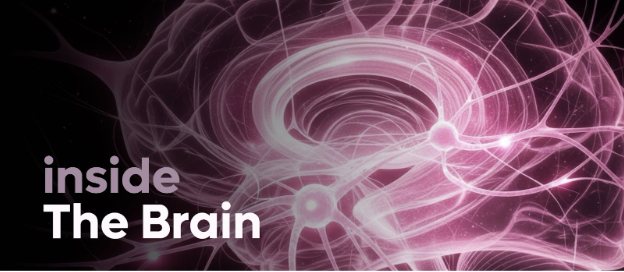
Why Claude Runs The Brain's Interface (While GPT Works Behind the Scenes)
September 21, 2025
GPT explains what should be done, Claude actually does it. That's why The Brain uses Claude as the interface for strategic reasoning while GPT processes data behind the scenes—each model where it excels.
Ever notice how some AI feels like talking to a brilliant but indecisive consultant? They explain back to you what you asked, compliment your thinking, then deliver long explanations about what should be done. Little action. A lot of validation and analysis.
This is classic GPT behavior - part of how the model was trained to operate. GPT is built with RLHF (Reinforcement Learning from Human Feedback), which rewards explanation and caution. This approach works brilliantly for many tasks, but semantic reasoning with organizational knowledge isn't one of them.
And that's why Claude is the absolute winner in the race! Let's go through the why's and the hows.
The Action Gap in AI Models
Most busy users don't realize there are light-year quality differences between AI models when it comes to strategic work. You ask GPT to analyze your positioning against competitors, and it narrates what a competitive analysis should include. You ask Claude the same question, and it builds an analysis.
The difference isn't subtle; it's the difference between an advisor and an executive.
Here's why The Brain, and any Smart AI system that works with semantic complexity, works best with Claude even though our architecture is model-agnostic:
Claude: Sleeves rolled Up
Intent Translation: Claude excels at turning vague business requests into structured action. When you say "help me understand our market position," Claude doesn't explain what market positioning means—it processes your organizational knowledge and delivers strategic insights.
Semantic Reasoning: Where GPT sees document chunks, Claude understands relationships. It connects your vision to your methodology, your positioning to your messaging, your strategy to your execution. This isn't just better search—it's organizational thinking, and that's a fundamental difference between the LLMs.
Technical foundation: Claude uses Constitutional AI alignment rather than pure RLHF, creating principles-based decision-making that prioritizes self-critique and decisive translation of natural language instructions into actions. This architectural difference enables direct action rather than cautious narration.
GPT explains. Claude acts.
GPT: All about Words
GPT remains unmatched at one thing: semantic compression. It chunks and summarizes better than any model available. That's why The Brain actually uses GPT's power in the backend to process incoming information before we store it. But here's what 25+ years in B2B communications taught me: summarizing strategy isn't the same as executing it.
The Narration Problem: GPT tells you what should be done rather than doing it. Ask for messaging framework analysis, get a lecture on messaging frameworks. The processing power is there, but the strategic application isn't.
Context Limitations: GPT works with isolated information pieces rather than understanding strategic relationships. Your methodology stays disconnected from your positioning, your vision from your execution approach.
Technical foundation: GPT's monolithic transformer architecture with RLHF training rewards safe and explanatory behavior. This creates a strong bias toward cautious narrators—better at describing possible actions than issuing them directly, especially with vague instructions.
Mistral: Adaptable
Mistral offers something unique: complete adaptability through open weights. For organizations needing private deployment or aggressive customization, it's the only option that provides true ownership.
Direct But Brittle: Mistral acts without GPT's excessive explanation, but struggles with ambiguous strategic requests. It needs precise instructions rather than organizational intuition.
Fine-Tuning Potential: With dedicated development, Mistral can rival Claude in specific domains. But this needs work and time, most organizations don't have.
Technical foundation: Mixtral's mixture-of-experts architecture promotes sparse expert routing and specialization. Light alignment layers mean less instruction-following polish, creating directness but brittleness. Open weights enable domain-specific fine-tuning impossible with closed models.
“Three models. Three approaches. One clear winner for complex strategic work.”
The Microsoft Copilot Reality
Copilot has added GPT-5 with basic agentic capabilities, but these aren't available in Copilot Studio where agents and custom MCP connections are set up. Additionally, Copilot is optimized for security and using as few AI tokens as possible, which constrains how the GPT models operate and worsens what GPT would normally be able to do.
Why This Matters for Strategic Intelligence
The Brain requires autonomous reasoning with organizational knowledge. Claude's Constitutional AI enables principled decision-making where GPT's safety training creates cautious explanation.
Implementation Impact: Teams get strategic analysis while their colleagues are still waiting for AI to stop explaining what analysis means. Your organizational knowledge anticipates what you need before you finish asking.
Most companies using AI manage a smart intern who needs constant direction. Companies with Claude-powered intelligence multiply their executive reasoning across every team interaction.
Ready to stop talking to AI and let it roll up its sleeves? Let's talk: leoni@thebaascompany.com


